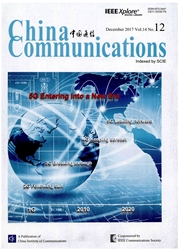

 中文摘要:
中文摘要:
为了应付爆炸数据,要求网络(MSN ) 成为了一条有希望的途径减轻交通负担,卸载通过活动聚会的细胞的交通。确实,重复数据传播导致很多不必要的交通。存在答案通常采用积极缓冲并且完成由利用机会主义的接触的交通的变。最大化卸载的用途的关键挑战需要利用在卸载的交通和用户延期要求之间的交易。因为当前的缓冲,很少策划地址这挑战在这份报纸,我们第一份量上在与缓冲用户的规模联系的细胞的操作员方面上解释卸载的收入,然后开发一个集中的缓冲协议最大化卸载的收入,它包括基于集合封面缓冲地点的选择算法,缓存数据传播策略基于多路径路由和缓存代替政策基于数据流行。真实世界的活动性踪迹上的试验性的结果证明建议缓冲协议在卸载情形超过存在计划。
 英文摘要:
英文摘要:
To cope with the explosive data demands, offloading cellular traffic through mobile social networks(MSNs) has become a promising approach to alleviate traffic load. Indeed, the repeated data transmission results in a great deal of unnecessary traffic. Existing solutions generally adopt proactive caching and achieve traffic shifting by exploiting opportunistic contacts. The key challenge to maximize the offloading utility needs leveraging the trade-off between the offloaded traffic and the users' delay requirement. Since current caching scheme rarely address this challenge, in this paper, we first quantitatively interpret the offloading revenues on the cellular operator side associated with the scale of caching users, then develop a centralized caching protocol to maximize the offloading revenues, which includes the selective algorithm of caching location based on set-cover, the cached-data dissemination strategy based on multi-path routing and the cache replacement policy based on data popularity. The experimental results on real-world mobility traces show that the proposed caching protocol outperforms existing schemes in offloading scenario.
 同期刊论文项目
同期刊论文项目
 同项目期刊论文
同项目期刊论文
 期刊信息
期刊信息
